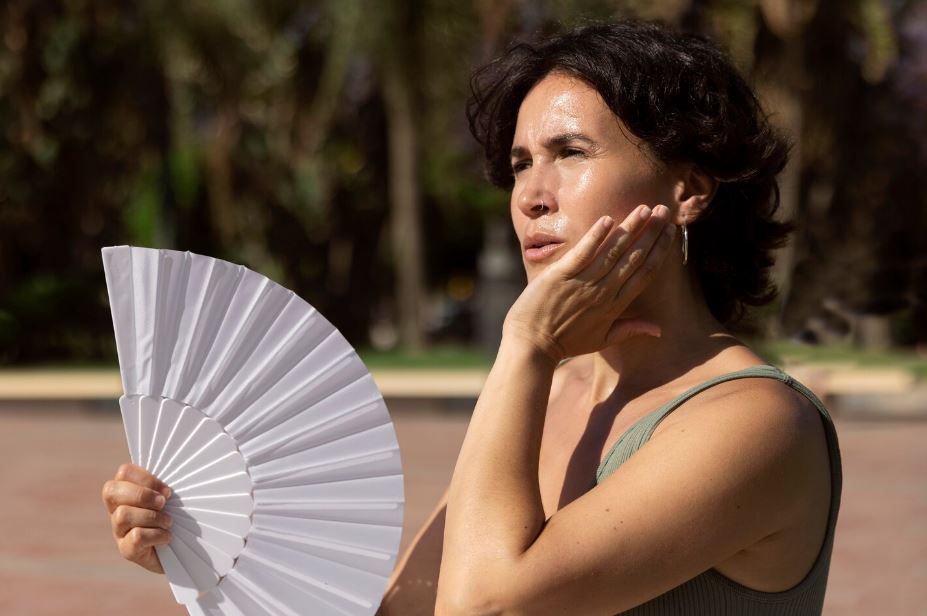
Erythropoietic protoporphyria, or EPP disease, is a disorder that causes pain instead of pleasure when exposed to sunlight. A walk outside is a rejuvenating experience for most people, but for patients with this disorder, even a brief exposure to the outdoors can cause excruciating pain and burning. When a child cries in pain after playing in the sun, parents frequently notice it for the first time. These symptoms are remarkably similar to those of severe burns, but they happen much more quickly.
A mutation in the ferrochelatase gene causes this disorder by interfering with the last stage of heme synthesis. Protoporphyrin accumulates in the skin and blood without being properly processed, making them photosensitive. As a result, light exposure triggers reactions that cause pain, swelling, and redness in patients. Repeated exposure over time may result in skin changes and scarring, and in rare but serious cases, protoporphyrin can accumulate in the liver and cause cirrhosis or even liver failure. Some people turn to liver transplantation as a last resort; it’s a frightening process that can save lives.
| Aspect | Details |
|---|---|
| Disease Name | Erythropoietic Protoporphyria (EPP) |
| Category | Rare inherited metabolic disorder |
| Primary Cause | Mutation in ferrochelatase (FECH) gene leading to protoporphyrin buildup |
| Core Symptoms | Severe skin pain, burning, redness, swelling after sunlight exposure |
| Severe Cases | Blisters, scarring, gallstones, liver complications |
| Diagnosis | Blood tests (protoporphyrin levels), genetic testing |
| Treatment | Sun avoidance, protective clothing, afamelanotide, beta-carotene, liver transplant in advanced cases |
| Typical Onset | Childhood or adolescence |
| Frequency | Estimated 1 in 50,000 to 1 in 100,000 globally |
EPP disease is a physically and emotionally taxing condition. Imagine a childhood without outdoor sports, beach summers, or playground afternoons. Families are forced to reorganize their daily routines to accommodate shadows and safety precautions. It becomes commonplace to wear sunblock, tint your car’s windows, and stick to a strict schedule. Patients frequently describe their lives as closely related to others but clearly distinct from them. We are reminded of the close connection between biology and environment by the experience’s remarkable versatility in forming identity and lifestyle.
Treatments that have been developed in the last ten years are drastically altering the situation. The medication afamelanotide, which increases the amount of melanin in the skin, has proven especially helpful in allowing patients to spend more time outside without risk. People who have experienced it frequently talk about how wonderful it is to stand in the sun without experiencing any pain right away—a luxury that many people take for granted. While new drug trials like bitopertin aim to address the root accumulation of protoporphyrin, beta-carotene has also been used with varying degrees of success, providing some protection. Patients have cause for optimism as each advancement is noticeably better than previous generations.
Most of the time, EPP disease does not pose a threat to life, but it does drastically reduce quality of life. While children adjust by avoiding schoolyard activities during the hottest parts of the day, adults tend to focus their careers on indoor occupations. Chronic sun avoidance causes vitamin D deficiency in many patients, which can result in secondary problems like osteoporosis. In this case, medicine has intervened through lifestyle counseling and supplementation techniques, which have proven to be very effective in reducing long-term effects.
The social setting of EPP disease mirrors more general difficulties encountered by people with uncommon illnesses. Due to its low prevalence—roughly one in 50,000 to 100,000—it frequently faces challenges in obtaining funding for research and raising public awareness. However, patient advocacy organizations have filled this void with campaigns that have been incredibly successful. Through the use of online platforms and personal narratives, they have made sure that EPP does not fade into obscurity. The similarities to Selena Gomez’s efforts to raise awareness of lupus or Michael J. Fox’s efforts to raise awareness of Parkinson’s disease are striking. Conditions that might otherwise go unnoticed are given shape and voice through advocacy.
Additionally, there is a cultural and artistic component. In literature, movies, and even patient blogs, the metaphor of “living in shadows” finds resonance, turning stories of medical hardship into ones of perseverance. The psychological toll and inventive ways in which patients adjust are described in these accounts with remarkable clarity. Communities come up with creative solutions, transforming adversity into innovation, from protective clothing lines to indoor pastimes. Some people find that these adaptations are surprisingly inexpensive ways to reclaim aspects of life that were previously dismissed as unattainable.
From a medical standpoint, EPP is especially creative in advancing personalized medicine. Even though the condition itself is uncommon, treatments like afamelanotide demonstrate how targeted therapies can change day-to-day living. EPP signifies to pharmaceutical companies the transition from mass-market medications to specialized treatments that address highly specialized needs. This is consistent with broader medical trends that use precision tools rather than one-size-fits-all approaches to treat genetic disorders.
Future treatments are no longer a pipe dream. In extreme situations, bone marrow transplants are being investigated in the hopes that the underlying enzyme deficiency may eventually be fixed. Although they are still in the experimental stage, genetic therapies are coming. Such discoveries could help patients not only control but also overcome their condition in the years to come. The idea of actual freedom is incredibly energizing for families who have spent a lot of time organizing their lives around avoidance.
But even as science develops, the individual still plays a crucial role. More weight is given to a patient’s account of the simple pleasure of feeling the sun pain-free than to any clinical study. Their voices serve as incredibly resilient reminders that medicine is about enabling life in all its forms, not just about survival. They draw attention to the human ability to adapt even in the face of limitations and to find purpose in situations that others might only perceive as restrictive.





